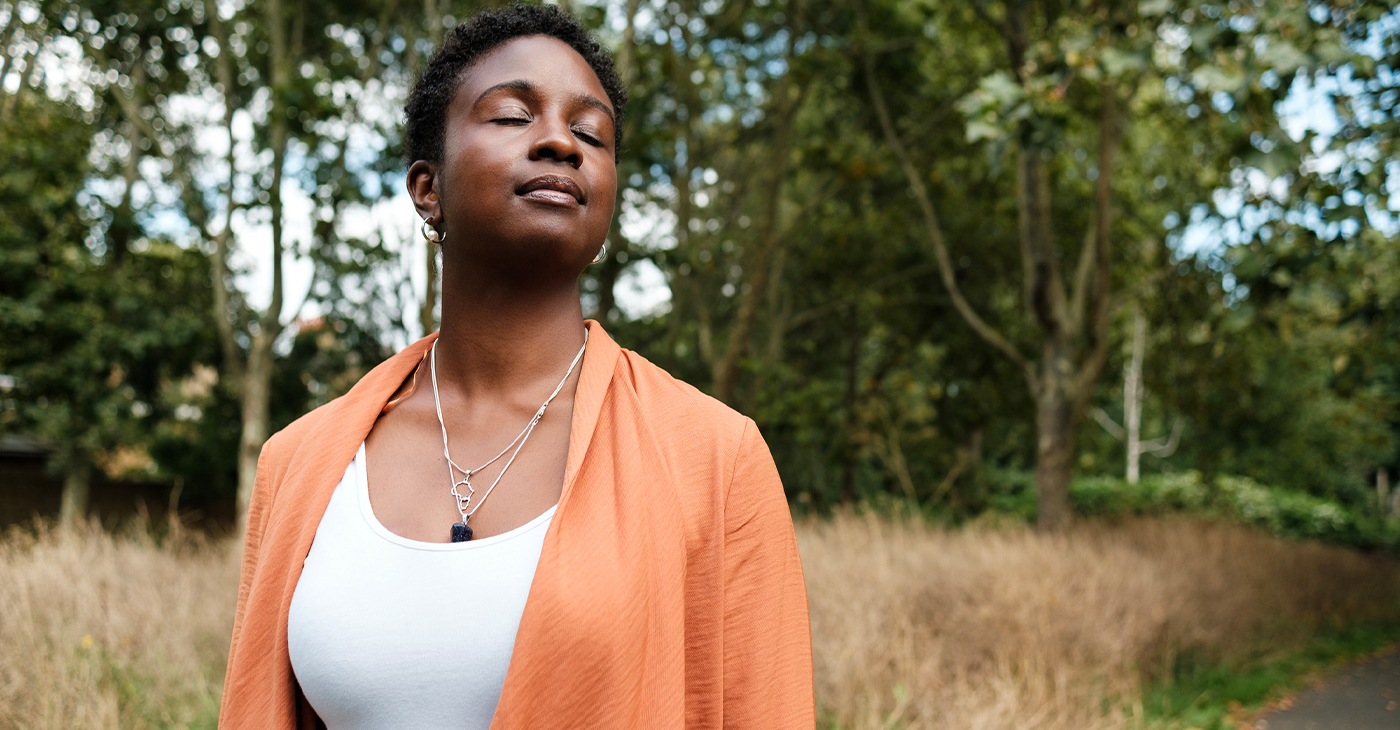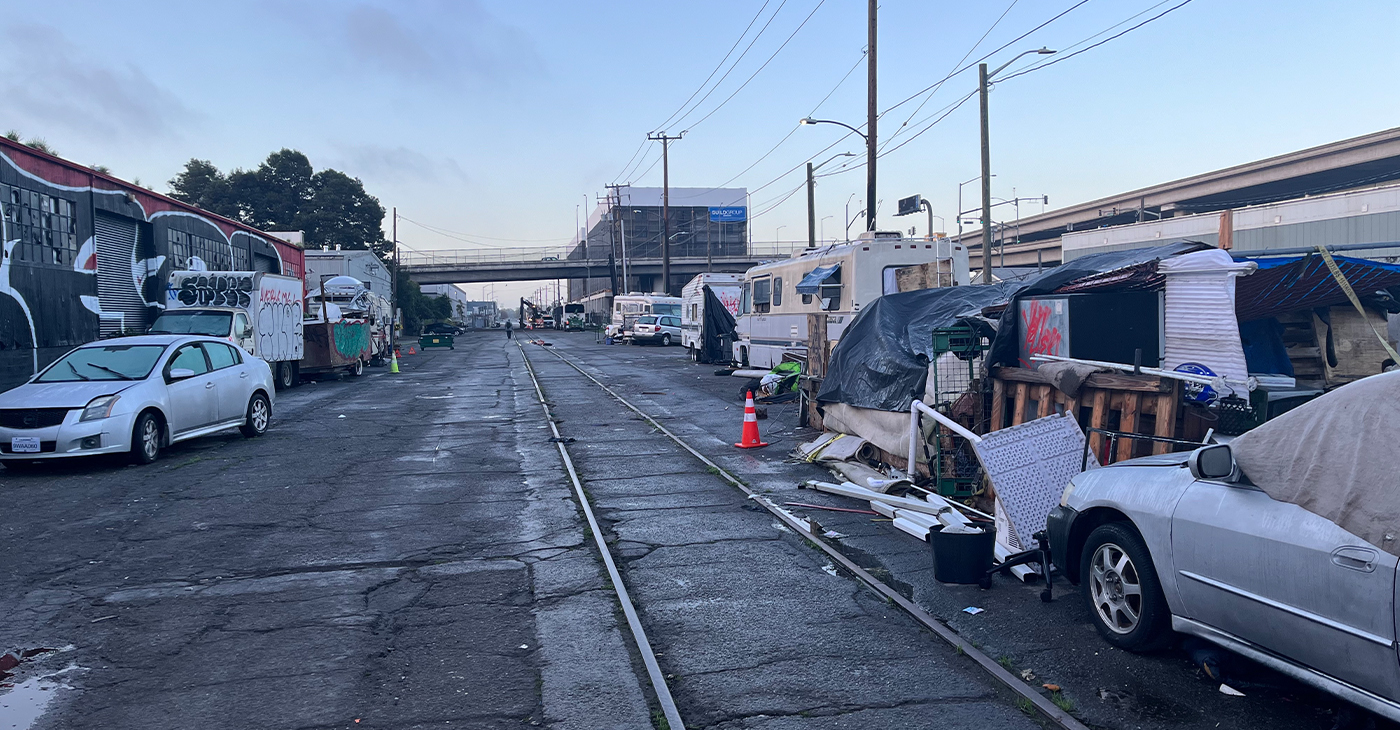Health
The Practice of Parents Posting Child Beatings Online Becoming More Common
by Jamaal Abdul-Alim
Special to the NNPA from the San Diego Voice & Viewpoint
Back in the days when a Black child ran afoul of his or her parents or elders, the child might be asked to go retrieve a “switch”—a thin branch from a tree or a bush—in order for the adult disciplinarian to use to beat the child as punishment for a particular infraction.
“That’s some hell of a psychology, right, to make you go get a switch to beat your own ass with, right?” the legendary comic Richard Pryor observed once in his famous 1979 “Live in Concert.” These days, the “switch” may be largely a thing of the past, but it’s been replaced by a new form of punishment that is just as unnerving—if not more—than being asked to retrieve a tree branch that one knows will be used to inflict pain on one’s own hide. Instead of asking misbehaving children to retrieve a switch, a small but growing number of Black parents are retrieving video cameras in order to record themselves whipping their children, then posting videos of the whippings on social media websites, such as Facebook, to embarrass their children to get them to discontinue any non-desirous behavior.
In the cases of boys, the parents were often upset over their sons’ involvement in gangs or similar criminal activity. In the cases of girls, the parents were typically upset over their daughters being sexually promiscuous or representing themselves as being older than they actually were. Consider, for instance, the titles of the following videos, which can be found easily online:
- “Father Slaps His Son For Trying To Be In A Gang ‘My Son Will Not Be In A Gang Who Ever Has A Problem Come See Me!’”
- “Mama Don’t Play: Mother Whoops Her Daughter For Being A Thot!” (A “thot” is a contemporary slang term for a promiscuous girl.)
- “Father Whoops On His 13-Year-Old Daughter Dressed Like Beyonce After Going Missing For 3 Days!”
- “Father Gives His Nephew An Old School Azz Whoopin On Webcam For Acting Hard On Facebook”
The practice of posting videos of child beatings online is so disquieting for some Black scholars that some declined to comment for this article. And those who did speak did so hesitantly out of concern that highlighting cases in which Black children were purposefully beaten on camera might perpetuate false notions that Black parents are more violent than parents of other ethnicities when it comes to the disciplining of their children.
That’s a valid concern when you consider the fact that these videos—often just a few minutes or less—are generating millions of views online and thus saturating large segments of American society. All of the Black scholars contacted for this article condemned the practice of combining corporal punishment and social media as counterproductive. They also urged Black parents to try to find alternative means of disciplining their children.
“I oppose the practice,” said Dorothy E. Roberts, a professor of law and sociology at the University of Pennsylvania. “I think they’re humiliating their children and I don’t think it’s going to help,” Roberts said. “If anything it’s going to make the children resentful. I think that humiliating children can be as painful as the physical harm.”
Carletta N. Perry, Assistant Professor of Psychology at Saint Leo University, said putting discipline methods on social media can increase negative attention-seeking behavior. “This is the opposite of what parents want,” Perry said. “They want their children to stop whatever negative behavior they are involved in, but sharing the discipline on social media is not the way. “Embarrassment may be one of the goals to stop the behavior, but, in fact, this type of behavior is an embarrassment to the family, the culture, and society,” Perry said.
It’s also legally perilous. In several cases parents were arrested for the beatings that were captured on videos and posted online. Both Roberts and Perry suggested that the practice of putting child beatings online appears to be indicative of parental frustration. They sought to make it clear that they did not want to bash the parents. They also sought to broaden the context in which the videotaped beatings took place. “I don’t just condemn these parents,” Roberts said. “I also condemn the situations that they and their children find themselves in.”
“As a psychologist, I have worked with parents who struggle to keep their children out of dangerous situations and in line on a day-to-day basis due to outside influences,” Perry said. “Unfortunately, I have also seen parents cry out for help to the police, to the courts, and to the community but many times their cry is unheard, unanswered and they feel alone in parenting during difficult situations.”
One important thing to understand about some of the cases in which Black parents beat their children and then post videos of the beating online is that some of the children’s misbehavior was perpetrated online. You might think of it as parents going to the playground where they were misbehaving and beating their children in public—only now the “playground” is the Internet.
Girls, for instance, may have been caught flirting with boys or older men online, and so their parents meted out the punishment in the same venue. Boys, on the other hand, may have bragged about gang involvement on their Facebook pages, and so their fathers or uncles post videos online of them beating the boys and forcing them to renounce their gang ties publicly.
Roberts questioned the premise of whether the practice of parents putting child beatings online is actually confined to Black parents and urged a reporter to search for cases in which parents of other ethnicities had done the same thing. While it’s difficult to collect and assess all cases of videotaped child beatings, a recent unscientific web search turned up one apparent distinction between cases of White parents and Black parents where videos surfaced of them beating their children online.
That is, in several cases where White parents had been videotaped beating their children, the video recordings were unintentional or surreptitious. That is to say, the White parents had simply been caught beating their children on video. Black parents, on the other hand, had put the videotaped beatings online on purpose. And sometimes they defiantly expressed blatant disregard for the legal repercussions or ramifications of doing so.
For instance, a Flint, Michigan mother who—along with her mother—made a video of them beating her 11-year-old son for claiming to be a “gangster” and not doing his school work actually looked into the videocamera and defiantly and daringly said: “Please call CPS (child protective services) if you want to. Watch this ass-whooping this ‘gangster’ gonna get.” The boy is made to apologize to his mother, asked about his grades in school and made to tell the people on Facebook: “it’s not cool to be a gangster.”
Illustrating how corporal punishment has been a longstanding institution within the family, the boy’s grandmother tells the boy she would “do just like my mama …. Walk and then come back and whoop your ass some more if I feel like it, you understand?” Perry—without speaking directly to the aforementioned case—said it’s important to “speak life into your children and tell them who they are, where they come from and where they are capable of going in their bright future.”
“And, always speak with love in your heart and never in angry moments,” Perry said. “Remember to pause before you speak because your actions and your words are the lessons they will remember.”
Bay Area
Mind, Body, and Spiritual Well-Being for Women Addressed in NAACP Forum in Oakland
The Women In The NAACP Oakland Branch is proud to announce the upcoming “Total You – Mind, Body, and Spirit Women’s Health Forum” scheduled for April 27 at Acts Full Gospel Church. Running from 9 a.m.-2 p.m. at 1034 66th Ave., this forum aims to provide an empowering platform for women to engage in discussions, gain knowledge, and access resources pertaining to their health and well-being.

Special to The Post
The Women In The NAACP Oakland Branch is proud to announce the upcoming “Total You – Mind, Body, and Spirit Women’s Health Forum” scheduled for April 27 at Acts Full Gospel Church.
Running from 9 a.m.-2 p.m. at 1034 66th Ave., this forum aims to provide an empowering platform for women to engage in discussions, gain knowledge, and access resources pertaining to their health and well-being.
The forum will feature renowned experts, healthcare professionals, and advocates from Genentech, John Muir Health, Sutter Health of The East Bay, Kaiser Permanente, and the Alameda County Public Health Department.
Our expert panel will address various aspects of women’s health, including physical, mental, and emotional well-being, and healthy relationships. The forum will encompass a wide range of topics such as breast cancer, menopause, reproductive health, nutrition, mental health awareness, preventive care, and much more.
Participants will have the opportunity to attend informative sessions, interactive workshops, and panel discussions led by experts in their respective fields. Additionally, there will be wellness activities, screenings, and informational booths offering valuable resources and support.
This forum is open to women of all ages and backgrounds, encouraging inclusivity and diversity in the conversation surrounding women’s health. Whether you’re seeking information for yourself, a loved one, or simply looking to connect with other women, this event promises to be enlightening and empowering.
For more information and to register for the Total You Women’s Health Forum, please visit https://www.naacpoakland.org/ or contact Dr. Delores Thompson. WIN chairwoman at (510) 328-3638.
The Women In The NAACP Oakland Branch is dedicated to empowering women, and young teen girls. We look forward to your participation in this important event.
To register, go to https://www.naacpoakland.org/events/the-total-you-womens-health-forum
Alameda County
Oakland Conducts Its Biennial ‘Point in Time’ Homelessness Count
Oakland, along with other cities in Alameda County, conducted their biennial ‘Point In Time’ census count on Feb. 1 to gain a thorough understanding of the size and dispersion of the homeless population in the region. The Point In Time (PIT) count is federally required by the Housing and Urban Development Department as a requirement to receive funding and resources to tackle homelessness in the area.

By Magaly Muñoz
Oakland, along with other cities in Alameda County, conducted their biennial ‘Point In Time’ census count on Feb. 1 to gain a thorough understanding of the size and dispersion of the homeless population in the region.
The Point In Time (PIT) count is federally required by the Housing and Urban Development Department as a requirement to receive funding and resources to tackle homelessness in the area.
David Modersbach, Grants Manager of Alameda County Health Care for the Homeless program, said that the methodology this time around was different, as this count had a much more personal “lived experience” aspect that previous counts did not have.
In 2022, the county relied more on statistical extrapolation and assumptions, but this year’s survey questionnaires allowed for details on substance abuse issues, how long someone has been living without proper housing, what resources people are in need of and much more.
“[The PIT count is] a critical opportunity for the county, Continuum of Care, and cities to understand the magnitude of homelessness in Alameda County. [The count] enables us to better allocate resources and implement effective programs to tackle this issue head-on in a compassionate and inclusive way,” Modersbach said.
St. Mary’s Center was one of the many meeting hubs across the county that hosted volunteers and community officials the morning of the count. The organization has been deeply involved in the effort to provide resources for unhoused people and others in need.
St. Mary’s is a nonprofit in West Oakland that helps seniors and preschool families with food and housing. Last year, the organization helped about 50 seniors find housing after they had fallen on hard times.
Sharon Cornu, executive director of St. Mary’s, said a lot of the older couples and individuals that come into the center have borne the brunt of the skyrocketing cost of living in the Bay Area. The most recent influx of seniors St. Mary’s has seen coming in for help has been made up of people who were evicted when the COVID-19-related moratorium on rent payment ended.
“Seniors are the fastest growing segment of the unhoused and the incredibly high cost of housing is driving them to the streets,” Cornu said.
Among the volunteers were workers with Operation Dignity, a nonprofit organization that helps veterans and those living on the street find shelter, transitional housing and supportive services.
“These are our stomping grounds,” Ivan Magana, program manager for Operation Dignity said.
Magana stated that his team was extremely familiar with the people residing in the encampments they were conducting the count in since Operation Dignity made many visits to these areas while doing community outreach. He said they had even informed some of the unhoused people they knew about the count a few days prior so they would not be alarmed when the enumerators showed up early in the morning to conduct the count.
Not everyone got the memo though, as the volunteers encountered an almost violent situation around the 6 a.m. when a young woman living in a bus yelled at the Operation Dignity workers to leave her alone.
Luckily, the three-year experience Mangana has working with Operation Dignity and his knowledge of therapeutic health services, equipped him with the techniques needed to deescalate the tension. The woman soon realized who the volunteers were and apologized, he said.
Another volunteer and Operation Dignity worker, Yolanda Kirkpatrick, noted that she was initially hesitant because of the early schedule. She felt the time deterred others from participating, too.
Her prediction would come true as the hours went on and they continued to walk along 24th St in downtown Oakland and there was very little activity on the streets.
The volunteers shared similar sentiments. Although the community the people they were engaging for the count and surveys encounter tend to distrust outsiders, the PIT count was necessary for the city to receive the appropriate level of federal funds to address a crisis that is spiraling out of control in California.
A full analysis and report of the count will be made available in the summer.
Community
For Cervical Cancer Month, Medical Community Focused on Education
January was Cervical Cancer Awareness Month. Physicians, advocates and others in the medical community commemorated the month by raising awareness about a form of cancer they say is highly preventable and treatable. Cervical cancer is caused by a virus called the human papillomavirus (HPV) and it develops slowly over time but can be prevented with proper care in girls as young as 13 years old.

By Magaly Muñoz
January was Cervical Cancer Awareness Month.
Physicians, advocates and others in the medical community commemorated the month by raising awareness about a form of cancer they say is highly preventable and treatable.
Cervical cancer is caused by a virus called the human papillomavirus (HPV) and it develops slowly over time but can be prevented with proper care in girls as young as 13 years old.
Sonia Ordonez, an OBGYN and gynecology surgeon at Kaiser Permanente, stated that as soon as people with cervixes reach the maturity reproductive age, they should start taking preventative measures like getting the HPV vaccine. The vaccine involves a series of two-doses for people aged 9 through 14 or three-doses for people 15 through 45 years old.
“I see a lot of young women who can’t remember or may not have gotten [the vaccine] when they were younger, or maybe got one, but we can give them the series of vaccines and restart at any point in time,” Ordonez said.
She said that cervical cancer is not the only cancer caused by HPV. Strains of the virus can also lead to throat, anal and penile cancers.
Screening is also an effective way to check for cervical cancer and should be done every three years after someone turns 21, doctors recommend. It is best to start as early as possible to catch occurrences early.
Ordonez said that this cancer is also more likely found in people of color and has led to more deaths overall.
A Mayo Clinic article published last month stated that Black women are more likely to be diagnosed and die of cervical cancer, compared to White women in the U.S.
2,000 Black women are diagnosed every year with cervical cancer and 40% die as a result.
“This disparity is not due to genetic differences among White, Black or Hispanic women, but rather related to systemic racism, access to healthcare and socioeconomic factors,” Dr. Olivia Cardenas-Trowers, a Mayo Clinic urogynecologist, said in the article.
Ordonez stated that immigrant women are also highly susceptible to the cancer, as many Latin American countries may not have accessibility to screenings or lack of insurance makes it harder for them to get tested.
Hispanic women are 40% more likely to be diagnosed with cervical cancer, and 30% more likely to die from it, as compared to non-Hispanic White women, according to the Office of Minority Health.
Family medicine physician, Joy Anyanwu, stated that the pandemic contributed to hesitancy about getting cervical cancer screenings among some women. Other factors are people’s aversion to vaccines, parents not wanting to believe that their children are or will become sexually active, and doubt about the overall effectiveness of the vaccine.
“The vaccine is very safe — over 97% effective in preventing cervical cancer,” Anyanwu said. “Even if you aren’t having sex, the earlier you start would actually help.”
Anyanwu said she understands that parents might not want to ask questions about their children’s reproductive health, but it’s a mindset that can be a barrier to having important conversation about prevention or care.
To keep families their families and communties healthy, the doctor emphasized that people should prioritize keeping up with their vaccine series and going to screenings every year.
-

 Activism4 weeks ago
Activism4 weeks agoOakland Post: Week of March 27 – April 2, 2024
-

 #NNPA BlackPress4 weeks ago
#NNPA BlackPress4 weeks agoCOMMENTARY: D.C. Crime Bill Fails to Address Root Causes of Violence and Incarceration
-

 #NNPA BlackPress4 weeks ago
#NNPA BlackPress4 weeks agoFrom Raids to Revelations: The Dark Turn in Sean ‘Diddy’ Combs’ Saga
-

 #NNPA BlackPress4 weeks ago
#NNPA BlackPress4 weeks agoCOMMENTARY: Lady Day and The Lights!
-

 #NNPA BlackPress4 weeks ago
#NNPA BlackPress4 weeks agoMayor, City Council President React to May 31 Closing of Birmingham-Southern College
-

 #NNPA BlackPress4 weeks ago
#NNPA BlackPress4 weeks agoBaltimore Key Bridge Catastrophe: A City’s Heartbreak and a Nation’s Alarm
-

 #NNPA BlackPress4 weeks ago
#NNPA BlackPress4 weeks agoBaltimore’s Key Bridge Struck by Ship, Collapses into Water
-

 #NNPA BlackPress4 weeks ago
#NNPA BlackPress4 weeks agoBeloved Actor and Activist Louis Cameron Gossett Jr. Dies at 87


















































